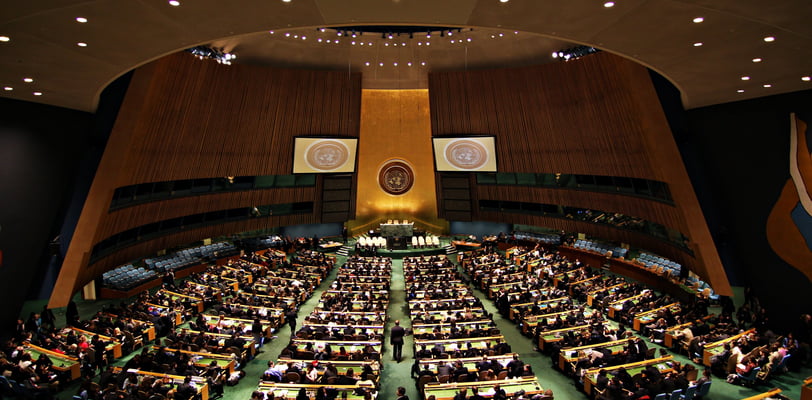UN Framework Convention on Climate Change
The first climate treaty
3 min read


The United Nations Framework Convention on Climate Change (UNFCCC) is a cornerstone of global efforts to address climate change. The international treaty was established in 1992 at the Earth Summit in Rio de Janeiro. Its main objective is to prevent dangerous human interference with the climate system by stabilizing greenhouse gas concentrations in the atmosphere at a level that would prevent severe impacts on the climate. Today, it has nearly universal membership, with 198 parties (including all United Nations member states).
In essence, the UNFCCC provides the framework for countries to cooperate on tackling climate change. It encourages countries to work together to reduce their carbon emissions, adapt to the effects of climate change, and provide financial support to developing nations that are particularly vulnerable to climate impacts.
Why Was the UNFCCC Created?
By the late 20th century, scientific research had confirmed that human activities—especially the burning of fossil fuels (coal, oil, and gas)—were releasing large amounts of greenhouse gases into the atmosphere. These gases, like carbon dioxide (CO₂) and methane (CH₄), trap heat and cause the planet to warm, a phenomenon known as the greenhouse effect. As global temperatures began to rise, so did concerns over the long-term effects of this warming.
Climate change poses serious risks to the environment and human societies. Rising temperatures contribute to more extreme weather events (such as floods, droughts, and hurricanes), melting ice caps, rising sea levels, and disruptions to agriculture, water supplies, and ecosystems. Recognizing these growing threats, the international community created the UNFCCC to provide a unified approach to addressing climate change.
Key Functions of the UNFCCC
1. Facilitating International Cooperation
The UNFCCC brings together nearly all the countries in the world to discuss and coordinate actions on climate change. It provides a platform for countries to negotiate commitments to reduce their greenhouse gas emissions and adapt to climate impacts.
2. Setting Climate Goals
The UNFCCC doesn’t set specific binding targets on its own but serves as a framework for future agreements. For instance, key agreements like the Kyoto Protocol (1997) and the Paris Agreement (2015) were negotiated under the UNFCCC framework.
3. Providing Financial and Technical Support
The UNFCCC emphasizes the need for developed countries, which have historically contributed the most to greenhouse gas emissions, to support developing countries in their efforts to combat climate change. This support often comes in the form of financial aid, technology transfer, and capacity-building assistance.
Major Agreements Under the UNFCCC
The UNFCCC has provided the foundation for several key international agreements aimed at reducing global emissions and addressing climate change. The two most significant are:
The Kyoto Protocol (1997)
This was the first major agreement under the UNFCCC and set binding emission reduction targets for developed countries. The idea was that industrialized nations, which had contributed most to the problem of climate change, should take the lead in reducing their emissions.
The Paris Agreement (2015)
This agreement was a landmark in global climate policy. It set a global goal of limiting temperature rise to well below 2°C above pre-industrial levels, with efforts to limit it to 1.5°C. Unlike the Kyoto Protocol, the Paris Agreement requires all countries—developed and developing—to make commitments to reduce their emissions, known as Nationally Determined Contributions (NDCs).
How Does the UNFCCC Work?
The UNFCCC operates through Conferences of the Parties (COPs), annual meetings where representatives from every country come together to review progress, negotiate further action, and discuss issues related to climate change. These COPs are crucial for updating and improving global climate efforts.
At these meetings, countries report on their progress in cutting emissions and adapting to climate change. They also discuss new scientific findings and negotiate the details of international climate policy. The Paris Agreement, for example, was adopted at COP21 in 2015 in Paris.
The UNFCCC is critical to the global fight against climate change. It provides a structured process for countries to discuss and negotiate their responses to climate change, making cooperation possible even when interests differ. The framework also ensures that climate change stays at the top of the global agenda, encouraging scientific research, policy development, and international collaboration.
Climate change is one of the greatest challenges facing humanity, and no single country can solve it alone. Through the UNFCCC, nations can work together to find solutions, share technology, and provide financial support to those who need it most. As climate impacts become more severe, the role of the UNFCCC in fostering cooperation and action will only become more important.
Awareness
Bridging gaps in climate policy understanding and action.
contact@climatepolicypractice.org
© 2024. All rights reserved.
Services
Podcast
